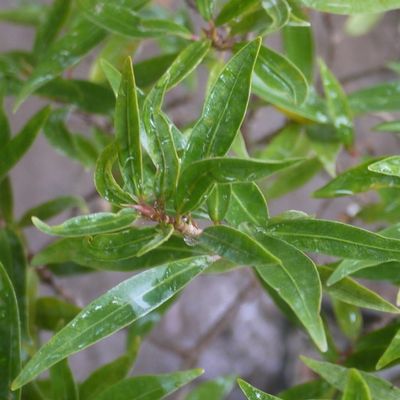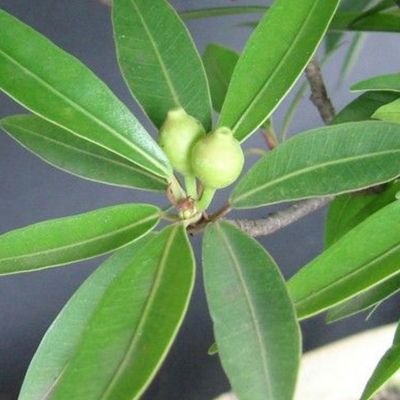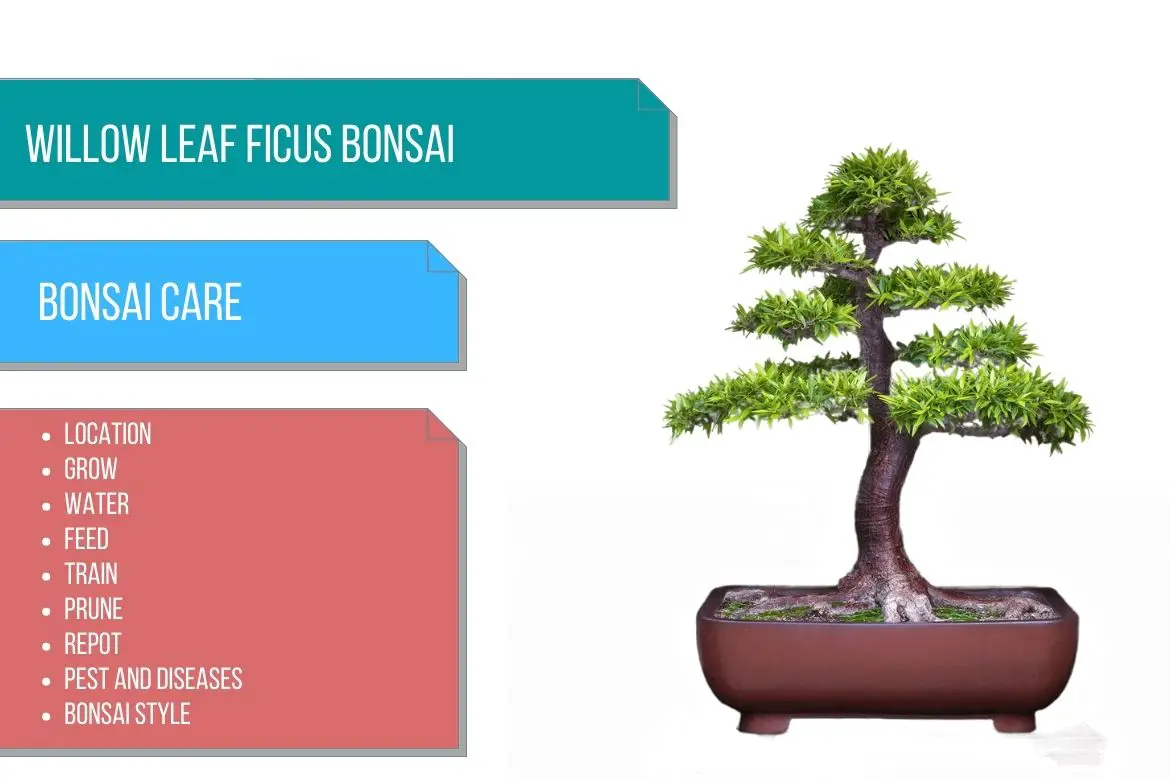
Willow leaf fig
(Ficus neriifolia / Ficus salicifolia)
Country of Origin : South Asia
Bonsai Styles : Broom, group, informal upright
Zone : 10 – 12
Ficus neriifolia is probably derived from Ficus salicifolia. However, F. salicofolia has a more compact growth habit with a slower growth rate.
In the world of bonsai, both of these terms are used interchangeably. And both are called willow leaved fig trees.
Since a long times, the Ficus neriifolia tree has been a subject of making beautiful bonsai tree.
Also read: Other varieties of fig trees used to make bonsai
One of the advantages of making a Willow leaf ficus bonsai tree is that the tree has the ability to develop a strong, straight trunk within a very short period of time.
This is an evergreen rubber tree that has long, narrow, lanceolate, dark green leaves. The shape of the leaves is similar to that of oleander tree leaves.
The leaves are arranged alternately and at short distances along the branches of this plant.
The branches of the tree can also be pruned and trained easily to make an attractive canopy shaped like an umbrella (broom bonsai style). This mimics the trees natural shape in the wild.
Young plants also bear flowers from which berry-shaped fruits develop. This fruit is initially green in color, but as it matures it turns reddish or purplish brown in color.
It can also be treated as an indoor bonsai tree.
Read more about other bonsai trees species in : Bonsai tree care

Lanceolate leaves of willow leaved ficus tree.

Berries of willow leaved ficus tree.
Best location to keep Willow leaf ficus Bonsai
The tree can thrive in both full sun and partial shade. Furthermore, Ficus neriifolia bonsai tree can be kept indoors throughout the year.
You can keep the bonsai in south or west facing window or windowsill.
You can place it outdoors in the summer while it is sunny, or partly shaded. However, keep it protected from the midday sun.
The bonsai container should be brought back indoors once the temperature drops below 59°F (15°C) in the fall.
At this time, a suitable temperature range for the tree is between 59°F and 75°F (15°C and 24°C).
It should be noted though, that at this time the tree will shed its leaves. But don’t worry, when the tree is placed back in a warm room with medium humidity, the leaves will grow back in about 6 to 8 weeks.
IMP: Refer sunlight requirements for indoor plants for more indoor gardening ideas. Also, refer to do bonsai trees need sunlight for more indoor and outdoor bonsai location ideas.
Propagation of Willow leaf ficus
Willow leaf ficus can be propagated by planting mature hardwood stem cuttings in early summer.
Apply some rooting hormone and plant it in a rooting medium. Maintain a temperature between 68°F and 77°F (20°C and 25°C).
You can also perform air layering. However, for this the plant should be tall enough.
Watering Willow leaf ficus Bonsai
Water the tree when the soil feels a bit dry to the touch.
However, reduce the frequency of watering when the tree has shed its leaves.
You can use tap water to water your Willow ficus bonsai tree.
Read watering bonsai tree for more details.
Wiring Willow leaf ficus Bonsai
Wiring is usually not necessary (since mostly this tree is shaped in broom style), but it can be done throughout the year if it is needed.
Summer is a good time to wire the branches.
The tree has closely growing leaves that form a dense foliage. Hence, wiring younger branches can be a little tricky as sometimes while wiring you will lose some leaves from the branch.
A branch that is two years old and has already lost its leaves can be wired.
To protect the bark of branches older than three years, they must be guyed down.
In order to shape a willow leaf ficus bonsai tree into a desired shape, it is also helpful to repeatedly bend thin stems and branches by hand.
Pruning Willow leaf ficus Bonsai
When to prune Willow leaf ficus bonsai?
How to prune Willow leaf ficus bonsai?
You can prune the branches throughout the year.
Once the new shoots have reached a length of 4 to 8 inches (10 – 20 cm), cut them back to 0.5 to 2 inches (1 – 5cm).
As your bonsai attains your desired shape, you can prune it as per your requirements.
Remove all of the shoots that are growing within the crown as well as those that are growing straight upwards.
In addition, you can also remove large old leaves during the main growing season.
Repotting Willow leaf ficus Bonsai
When to repot Willow leaf ficus bonsai?
Ficus neriifolia bonsai trees can be repotted every 2 years in the spring.
Also, perform root pruning at the time of repotting.
You can use a basic free-draining bonsai soil mix as a potting soil.
OR
You can use a mix of sand, loam and peat moss in the ratio 1:1:1.
OR
You can also use a mix of garden compost, sand and fired clay particles in the ratio 1:1:1.
Must Read: Bonsai Soil Recipes
Must read : Choosing the right bonsai container
Feeding Willow leaf ficus Bonsai
In the growing season, use a liquid bonsai fertilizer once every 3 weeks.
In winters however, reduce the feed application to once every 6 weeks.
Read more about bonsai fertilizer and its application.
Diseases and pest of Willow leaf ficus Bonsai
This tree is particularly susceptible to spider mites.
The tree will shed all its leaves if the mite infestation is not treated. Furthermore, the tree will also fail to produce any more new shoots.
Neem oil or horticultural oils can be applied to reduce the infestation. It has been proven that sulfur sprays are highly effective in the fight against mites.
The leaves can also be washed with a highly diluted solution of soapy water.
Willow leaf ficus bonsai care
Despite the fact that it usually loses all its foliage if its care is disrupted in any way or if there are any other changes to the external environment, bonsai beginners should not shy away from growing a Ficus neriifolia bonsai tree.
Make sure that the bonsai tree is kept at a warm and bright location and also the roots of the tree are warm.
If the tree is kept in a dark location, the tree will shed its leaves.
The tree will also shed its leaves when it is over watered. Hence less water is always better than more water.

